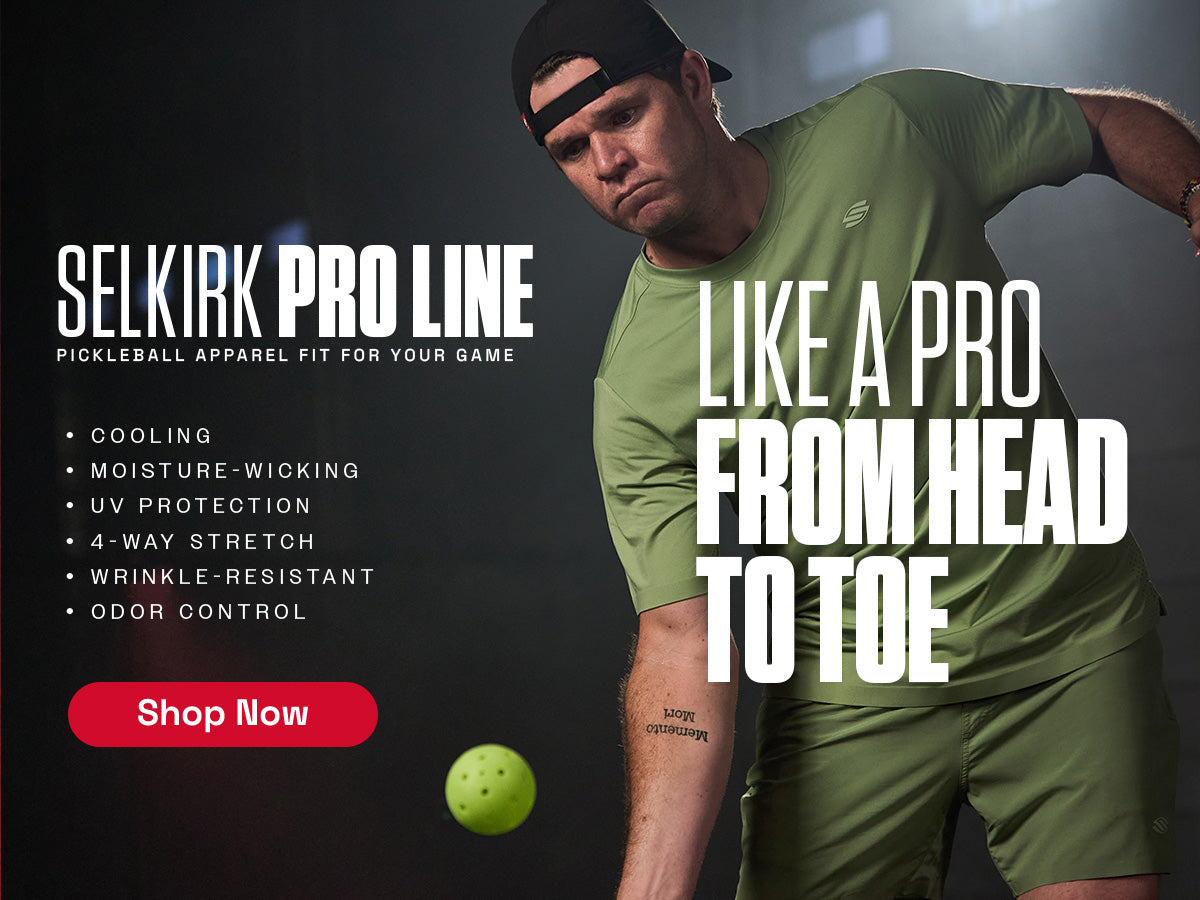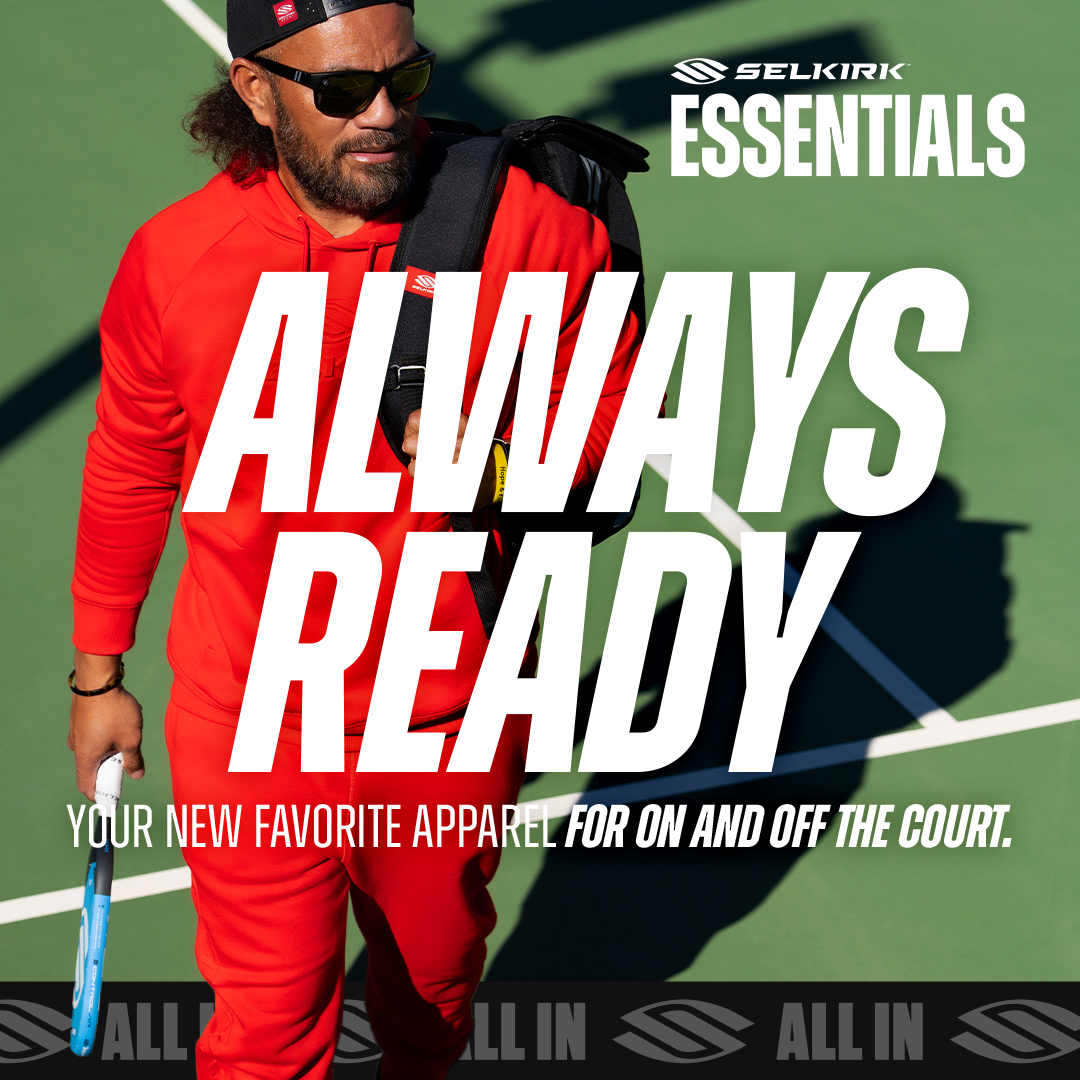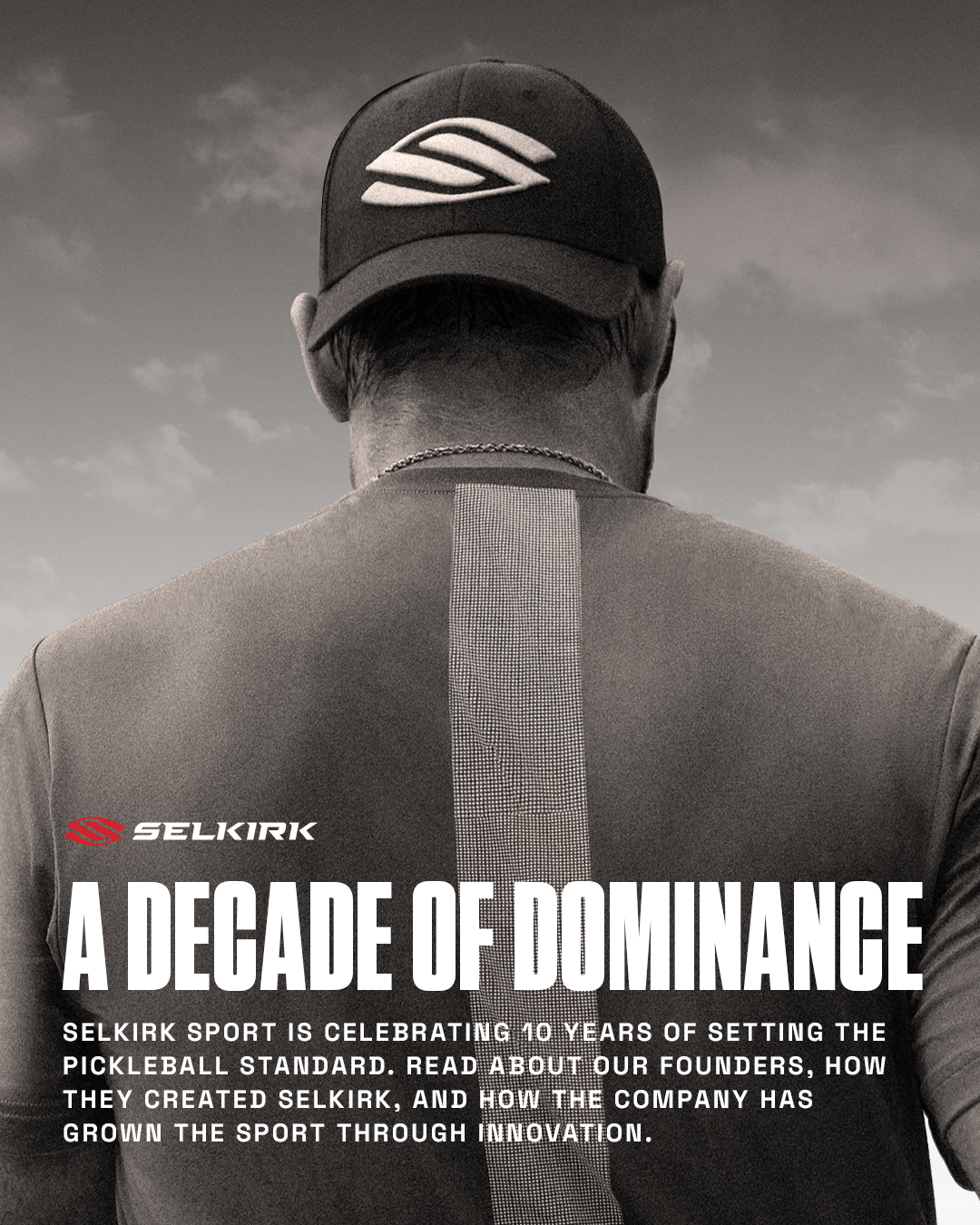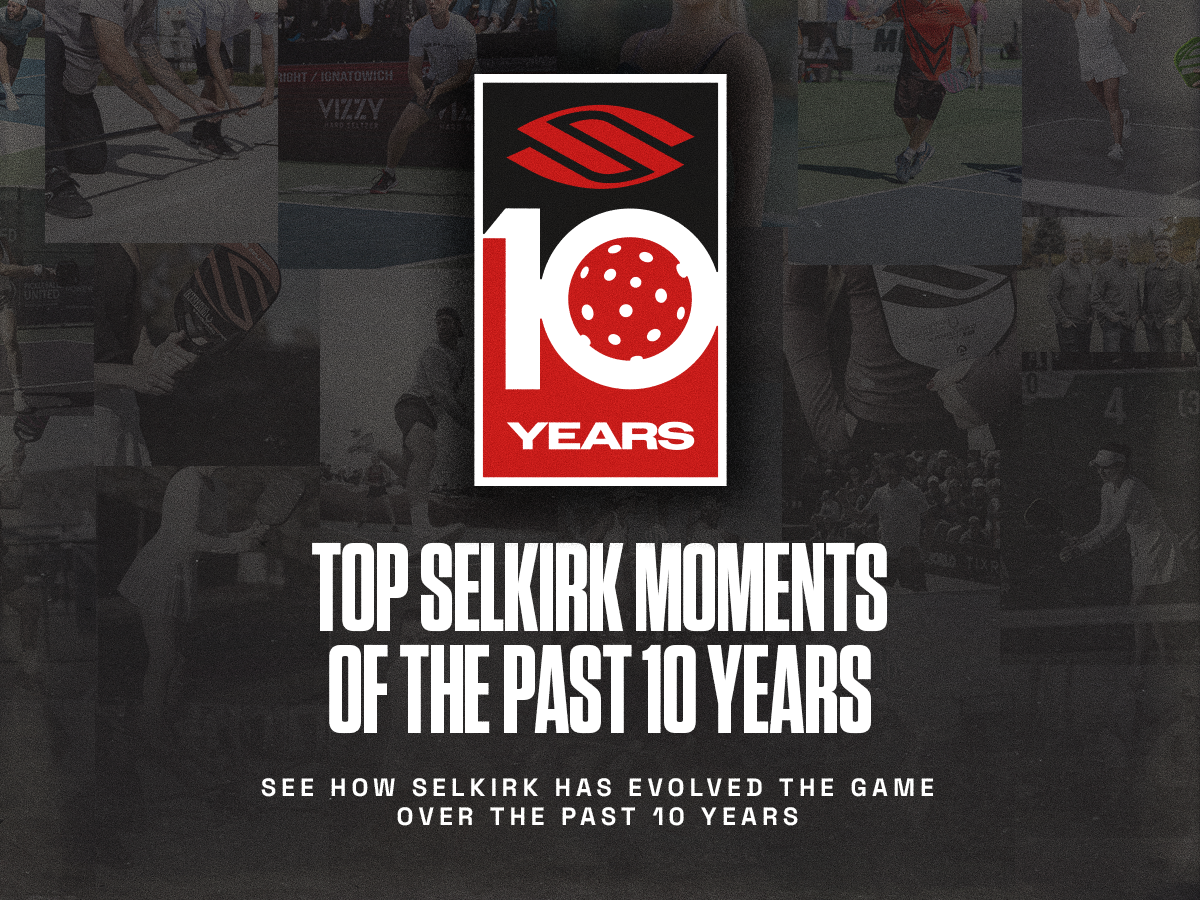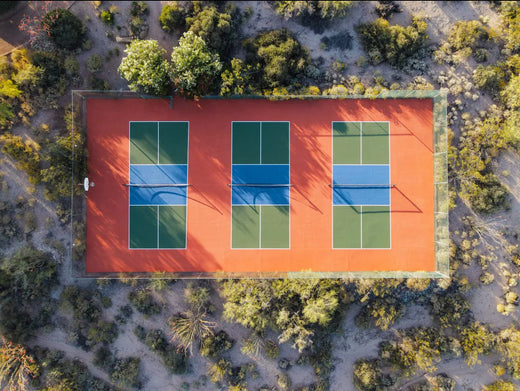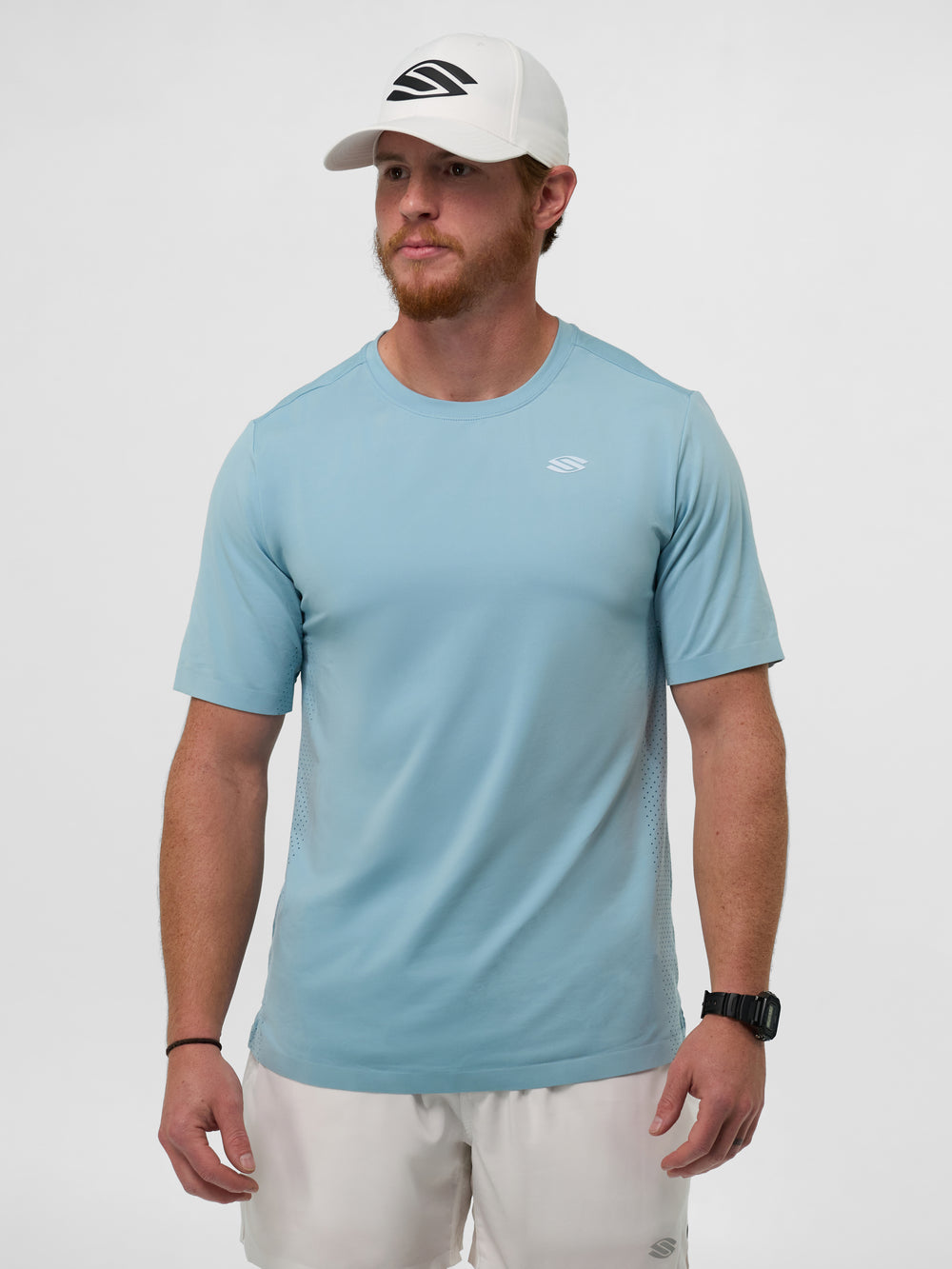As pickleball continues to grow in popularity, courts are springing up in various locations and on different types of surfaces.
While it's exciting to see more places to play, it's important to recognize that not all surfaces play the same.
Understanding the differences in how various court materials affect the game can help you adjust your play style and choose the best surface for your preferences.
Cement courts: Durability with a hard surface
Cement courts are another popular choice for outdoor pickleball, offering a harder surface compared to asphalt.
- Who it's good for: Players who prefer a faster game and don’t mind the extra impact on their joints.
- How it plays: Cement is a fast surface, causing the ball to bounce higher and travel quicker, which can favor more aggressive play.
- Pros: Extremely durable and low-maintenance; offers a consistent surface for ball control.
- Cons: Hard on the joints, especially over time, and less forgiving if players fall.

Asphalt courts: A popular option for outdoor pickleball
Asphalt courts are one of the most common surfaces used for outdoor pickleball. They are easy to maintain and can be found in many public parks.
- Who it's good for: Asphalt is ideal for recreational players who frequent public parks.
- How it plays: Asphalt courts provide a medium-speed playing surface with consistent ball bounce, though the roughness can lead to quick ball deterioration.
- Pros: Durable and widely available; offers a good balance of playability for different skill levels.
- Cons: Over time, cracks and uneven surfaces can develop, especially in areas with extreme weather conditions. The hardness of the surface can also be tough on joints.
Acrylic courts: Professional-level play
Acrylic surfaces are typically installed as a protective coating over cement or asphalt. This peformancing-enhancing coating is commonly used in professional pickleball tournaments is known for its consistent performance.
- Who it's good for: Competitive players who demand consistency and durability in their playing surface.
- How it plays: Acrylic provides a medium-speed surface with excellent ball bounce and traction, allowing for precise play and quick reflexes.
- Pros: Durable, weather-resistant, and provides a consistent playing experience.
- Cons: Installation costs can be high and it requires reapplication every few years.
Cushioned courts: The ultimate in player comfort
Cushioned courts are designed with layers of padding — usually comprised of plastics or foam — beneath the surface to provide a softer, more forgiving playing experience.
- Who it's good for: Players with joint issues or those who prioritize comfort over speed.
- How it plays: Cushioned courts offer a slower-paced game with a lower bounce, allowing for easier movement without the stress on joints.
- Pros: Gentle on the body and great for injury prevention.
- Cons: Higher installation and maintenance costs compared to other surfaces.

Wooden courts: Indoor pickleball with a smooth finish
Wooden courts are common in indoor pickleball facilities, often converted from basketball or volleyball courts.
- Who it's good for: Indoor players who prefer a smooth, controlled environment.
- How it plays: Wooden courts offer excellent ball bounce and traction, with moderate speed. The smooth surface allows for quick footwork and precise shots.
- Pros: Comfortable on the body; good for players who value consistency in bounce and pace.
- Cons: Prone to being slippery if not properly maintained or if dust and sweat accumulate on the floor. In older facilities, the wooden boards may be uneven, causing poor unreliable bounces.
Clay courts: A unique, slower surface
Clay courts are not as common for pickleball but can be found in some areas, particularly where tennis courts are converted for dual use.
- Who it's good for: Players who enjoy a slower-paced game and extended rallies.
- How it plays: Clay slows down the ball considerably, providing a higher bounce and making play at the kitchen more challenging.
- Pros: Easier on the joints and great for players looking to slow down the pace.
- Cons: Requires regular maintenance and can become muddy or slippery when wet, affecting traction.
Grass courts: Casual and recreational play
Grass courts are often set up for casual, recreational play, particularly in backyard or park settings.
- Who it's good for: Social or casual players looking for a fun, relaxed environment.
- How it plays: Grass deadens the bounce, making volleys the preferred strategy. It allows players to employ strategies they wouldn’t in traditional games, but often leads to a more laid-back game.
- Pros: Comfortable on the body and easy to set up in large open spaces.
- Cons: Ball bounce is unpredictable, and grass can be slippery, especially when wet.
How often should a pickleball court be resurfaced?
Resurfacing a pickleball court is crucial for maintaining safety and optimal playability. Typically, outdoor courts like asphalt or cement should be resurfaced every four to eight years, depending on weather conditions and the level of use. Indoor surfaces, such as wooden or cushioned courts, may require less frequent resurfacing but should still be inspected regularly for signs of wear.
Regular maintenance ensures that the surface remains smooth and free from cracks or uneven areas that could pose safety hazards or affect play. Neglecting resurfacing can lead to reduced ball bounce, increased risk of injury, and an overall decline in the quality of the game.
Do you need different gear for different pickleball court surfaces?
Different court surfaces may require slight adjustments to your gear to optimize your performance. Here are a few considerations:
- Balls: Outdoor balls are typically harder and heavier, making them better suited for asphalt or cement courts. Indoor balls are lighter and softer, making them ideal for wooden or cushioned surfaces.
- Shoes: Shoes with good grip and cushioning are essential for faster, harder surfaces like acrylic or cement. For indoor courts, non-marking shoes are recommended to prevent damage to the floor.
- Clothing: On outdoor courts, especially on grass or clay, breathable and moisture-wicking clothing is important to stay comfortable. For cushioned indoor courts, players may prefer light, flexible fabrics that allow for ease of movement.
While the core equipment remains the same, making these small adjustments based on the surface can enhance your playing experience and protect your body from unnecessary strain.












